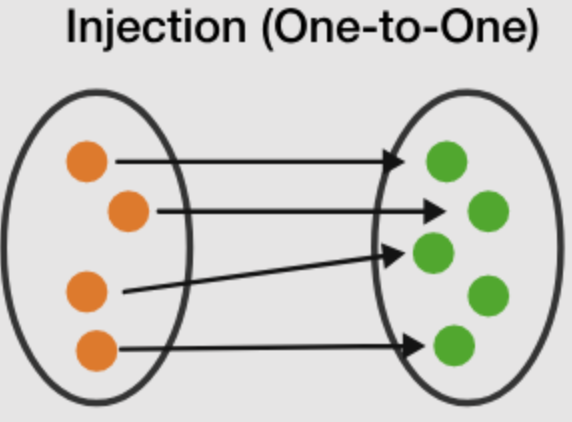Abstract
- A special type of Relation where each input value maps to exactly one output value. In relation, we can have an element that is a parent of one or more other elements
Injective
Surjective
Every element in the codomain is covered by the function. However, the function shown in the diagram below isn’t injective, since 2 inputs point to the same output.
Bijective
When a function is both injective & surjective. When a function has a Inverse Function, we can say it is bijective. Since inverse function uses the codomain of the original function as domain - surjective & inverse function follows the rule of function, each input maps to exactly one output - this shows no input value from the original function maps to more than one output, thus injective.
Inverse Function
- A Mathematical Function that essentially undoes the action of the original function
Example
Given , then .
If , then , .
Visual relationship with function
Inverse function is basically a reflection of the original function about the line
Real-value function
- A Mathematical Function that assigns Real Number as outputs for real numbers as inputs. In other words, it’s a function where both the Domain and the Co-domain are Subset of the real numbers
Polynomial Function
- is constant, and the polynomial function above is called polynomial of degree
Attention
A polynomial of degree can be factored as a product of linear and quadratic Factor.
For example, , where and are linear factors and is quadratic factor.
Rational Function
- Both and are Polynomial Function
- The Domain of consists of all Real Number except the root of - the value of that will make




